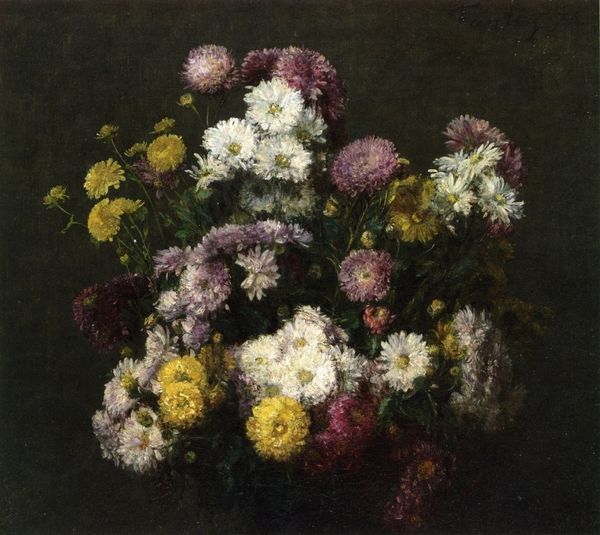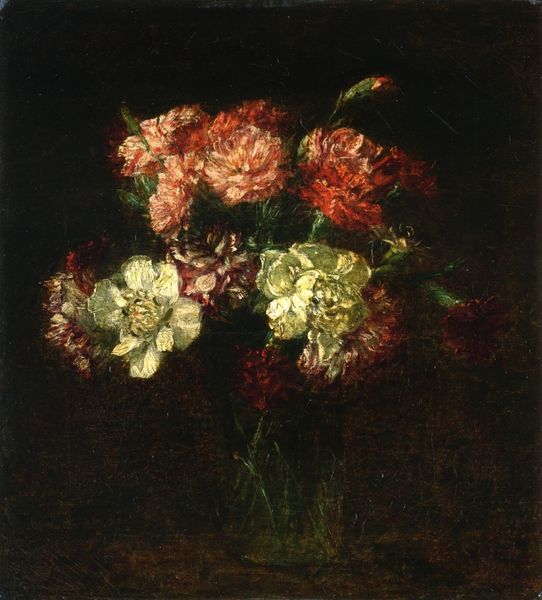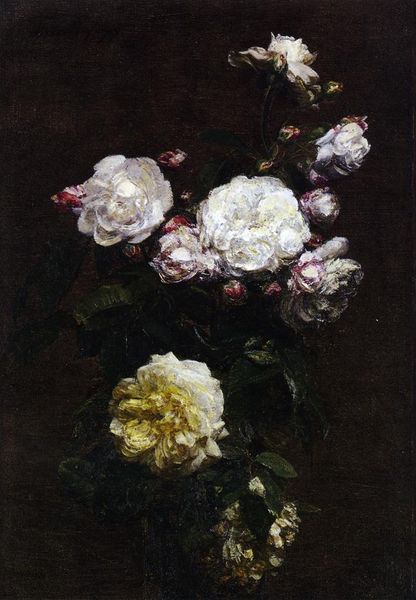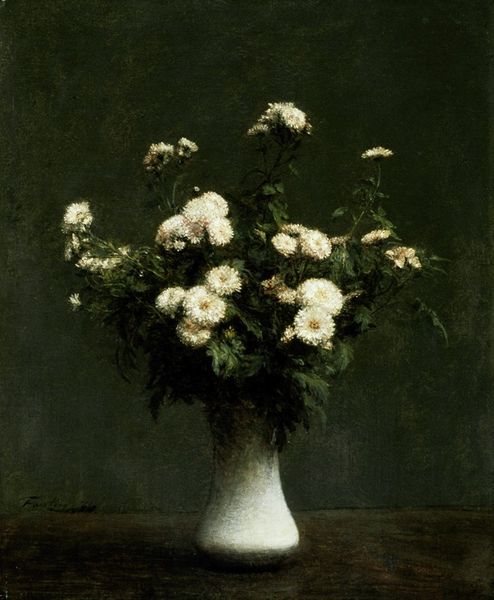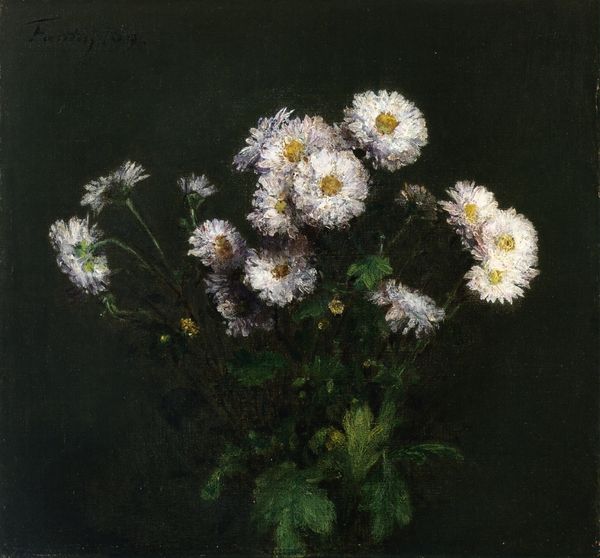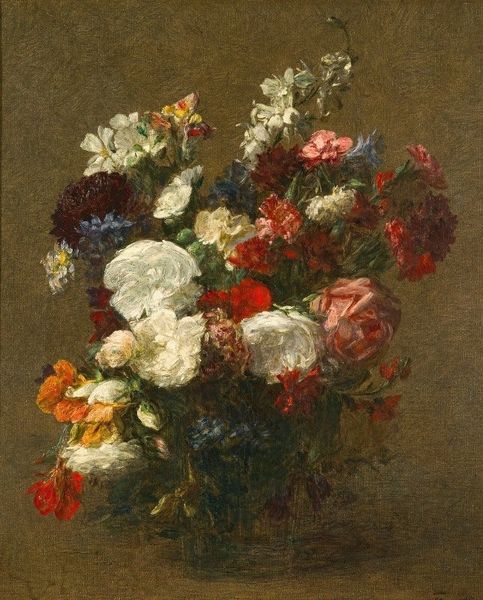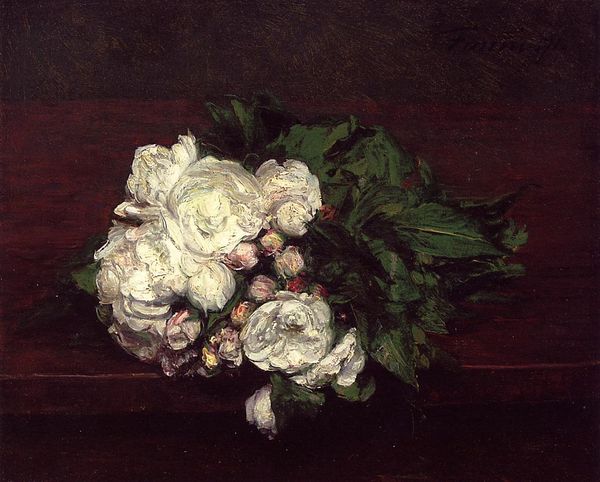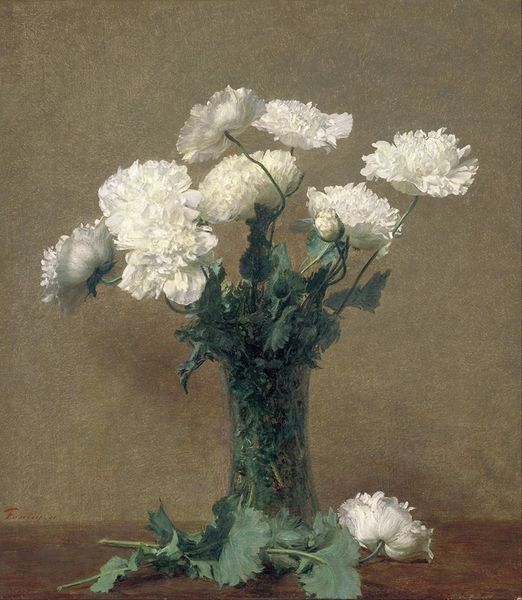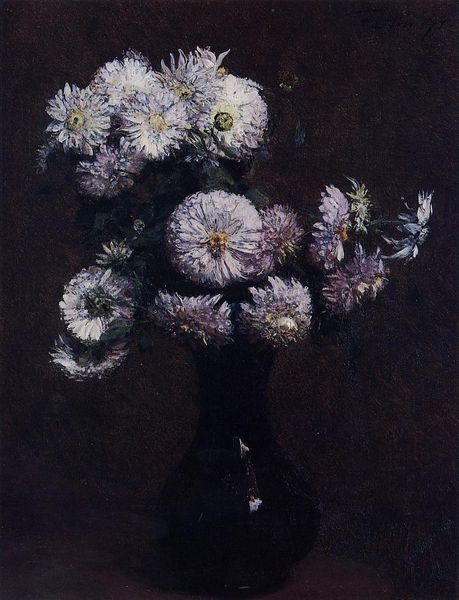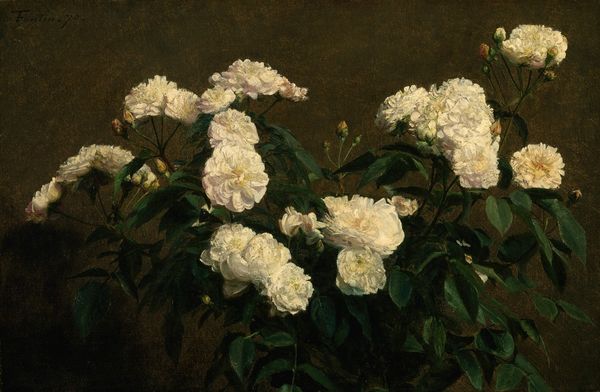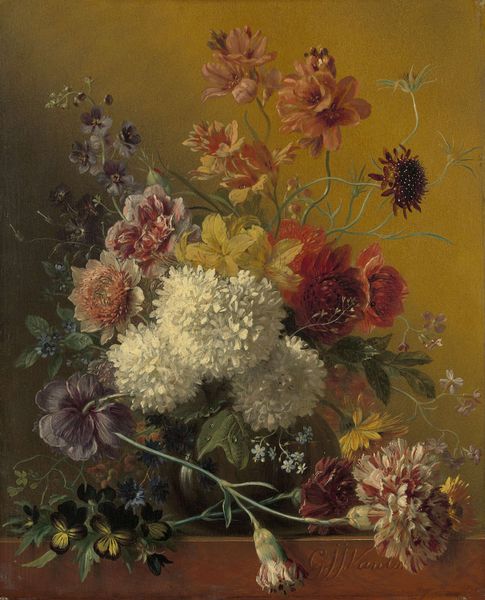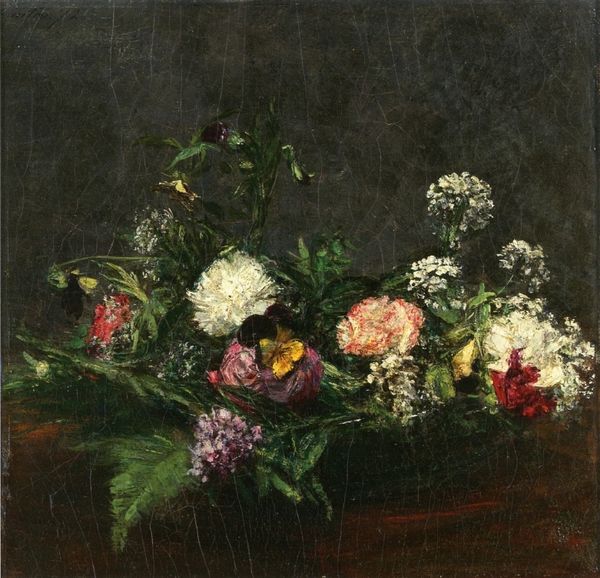
Copyright: Public domain
Curator: Jean Benner's "Fleur," completed around 1860, offers a striking study in contrasts. Editor: My immediate impression is of a dream—billowing white forms emerging from profound darkness. The composition feels almost theatrical. Curator: Indeed. Benner, working during the Romantic era, uses the oil paint medium to amplify the inherent tension in the imagery, pulling realism towards an idealized state. Editor: The flowers, likely hydrangeas, hover in a void. Their dense clusters of petals are beautifully rendered, creating complex tonal relationships that draw the eye in. It's about line and tone and density here, wouldn't you agree? Curator: Certainly. But I also find myself thinking about the symbolism of white flowers. Historically, they've represented purity, innocence, and even mourning, lending the painting a depth beyond pure aesthetics. Think of how the French associated white with royalty, how those qualities reflect societal norms of the time. Editor: I appreciate the reference, though focusing strictly on floral symbolism threatens to turn these luminous shapes into mere allegories! Doesn't the dark ground serve a critical compositional role, intensifying the whites and establishing the illusion of depth and space? It prevents the picture from collapsing into a flat, decorative arrangement. Curator: Precisely, Benner expertly wields this interplay. It creates a fascinating dialogue about cultural values, perhaps questioning those ideals by placing them in such an ethereal and uncertain setting. Editor: Yes, a painting isn't only a visual artifact—it holds implicit and explicit values. Benner is prompting us to interpret it through an interplay of form and icon, in context with the surrounding world. It invites viewers to a certain reading, though the aesthetic is always key to its effect. Curator: Ultimately, “Fleur” resonates for me as a visual manifestation of cultural memory, highlighting beauty but also alluding to the transience and fragility inherent in ideals. Editor: Agreed. It’s that tension, the play between the ethereal form and its dark grounding, which allows Benner’s creation to remain relevant, allowing us to encounter a fresh image each viewing.
Comments
No comments
Be the first to comment and join the conversation on the ultimate creative platform.
